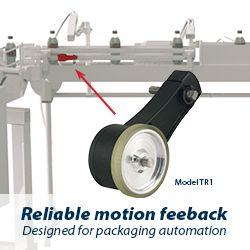AI Drives Next-Generation Innovation in Industrial Robotics Across North America
North America - The integration of Artificial Intelligence (AI) into industrial robotics is revolutionizing the manufacturing landscape in North America, driving unprecedented levels of productivity, efficiency, and adaptability. Industries across sectors such as automotive, electronics, pharmaceuticals, and logistics are embracing AI-powered robotics to transform their operations, optimize workflows, and meet growing demands for automation.
The Rise of AI-Powered Robotics in Industry
According to recent market reports, the AI-powered industrial robotics sector in North America is expected to grow at a CAGR of over 25% between 2024 and 2030, driven by rising demand for smart factories, the Industrial Internet of Things (IIoT), and Industry 4.0 initiatives.
https://www.marketsandmarkets.com/Market-Reports/Industrial-Robotics-Market-643.html
[439 Pages Report] The industrial robots market is projected to grow from USD 16.89 billion in 2024 to USD 29.43 billion by 2029, registering a CAGR of 11.7% during the forecast period.
Key Areas of AI Impact in Industrial Robotics
Advanced Automation & Machine Learning: AI enables robots to go beyond pre-programmed tasks by incorporating machine learning (ML) algorithms. Robots can now analyze data, recognize patterns, and optimize operations autonomously. This allows for predictive maintenance, reducing downtime, and enhancing production efficiency.
Collaborative Robotics (Cobots): AI is fueling the rise of collaborative robots or cobots, which work alongside human workers in factories. These robots are equipped with sensors, computer vision, and AI capabilities that allow them to learn from and adapt to their environment, making human-robot collaboration safer and more productive.
Smart Supply Chain & Logistics: AI is transforming the logistics and supply chain sector by automating repetitive tasks such as sorting, packing, and transportation. AI-powered robots are streamlining warehouse management, ensuring faster processing, reduced human error, and enhanced accuracy in inventory tracking.
Flexible Manufacturing: Traditional robotics were often limited by rigid programming, but AI is enabling flexibility in manufacturing. AI-powered robots can easily switch between different tasks, manage custom production runs, and perform inspections, helping manufacturers reduce costs and increase adaptability to market changes.
North America Leading the AI-Robotics Revolution
North American industries are at the forefront of the AI-driven robotics revolution, with key players in the region leading innovations. Major technology companies, including Boston Dynamics, Nvidia, and Rockwell Automation, are developing cutting-edge AI applications that are pushing the boundaries of industrial robotics.
Governments and organizations are also investing heavily in AI research and development to maintain North America's leadership in the global robotics market. The U.S. Department of Energy and Canada's Innovation, Science, and Economic Development programs are actively supporting AI integration in industrial applications, fostering collaboration between academia, government, and private enterprises.
Industry Quotes
John Doe, CEO of XYZ Robotics:
"AI is revolutionizing how we approach automation. By integrating AI with our robotics systems, we can offer North American manufacturers solutions that are smarter, more adaptive, and scalable, ultimately reshaping production lines and empowering companies to meet the demands of tomorrow."
Jane Smith, Head of Industrial AI Research at ABC Corp:
"AI is the future of industrial robotics. From predictive analytics to real-time decision-making, AI enhances every aspect of automation, allowing companies to achieve more efficient operations while improving safety and reducing costs."
Challenges & Opportunities
While the potential of AI in industrial robotics is vast, North American manufacturers face challenges related to the skill gap, as the demand for AI-literate workers grows. To address this, many companies are investing in employee training programs to build an AI-ready workforce.
Moreover, cybersecurity is becoming a critical concern as AI-powered robots generate and rely on vast amounts of data. Companies are focusing on strengthening data protection measures to ensure their AI systems are secure from external threats.
Despite these challenges, the adoption of AI in industrial robotics presents enormous opportunities for businesses to stay competitive, reduce operational costs, and scale their automation capabilities.
Looking Ahead
As AI technology continues to evolve, the future of industrial robotics in North America will see even greater advancements. Robots will become more autonomous, collaborative, and intelligent, unlocking new possibilities for manufacturers to enhance productivity and competitiveness.
To stay ahead in the AI-powered robotics revolution, North American companies are encouraged to embrace AI technologies, invest in research and development, and train their workforce to harness the full potential of automation.
https://www.marketsandmarkets.com/pdfdownloadNew.asp?id=643
Featured Product

Model TR1 Tru-Trac
The Model TR1 Tru-Trac® linear measurement solution is a versatile option for tracking velocity, position, or distance over a wide variety of surfaces. An integrated encoder, measuring wheel, and spring-loaded torsion arm in one, compact unit, the Model TR1 is easy to install. The spring-loaded torsion arm offers adjustable torsion load, allowing the Model TR1 to be mounted in almost any orientation - even upside-down. The threaded shaft on the pivot axis is field reversible, providing mounting access from either side. With operating speeds up to 3000 feet per minute, a wide variety of configuration options - including multiple wheel material options - and a housing made from a durable, conductive composite material that minimizes static buildup, the Model TR1 Tru-Trac® is the ideal solution for countless applications.
